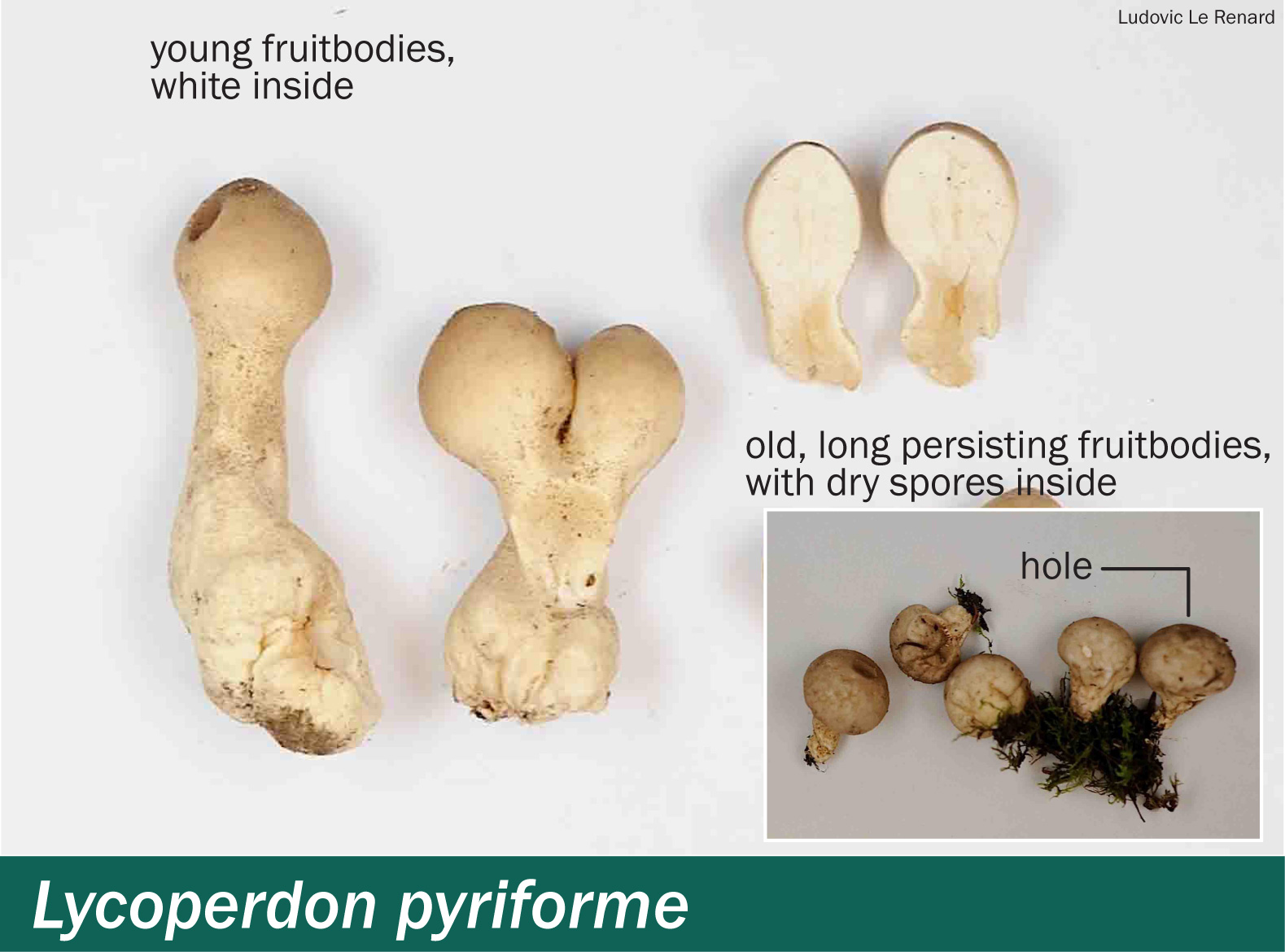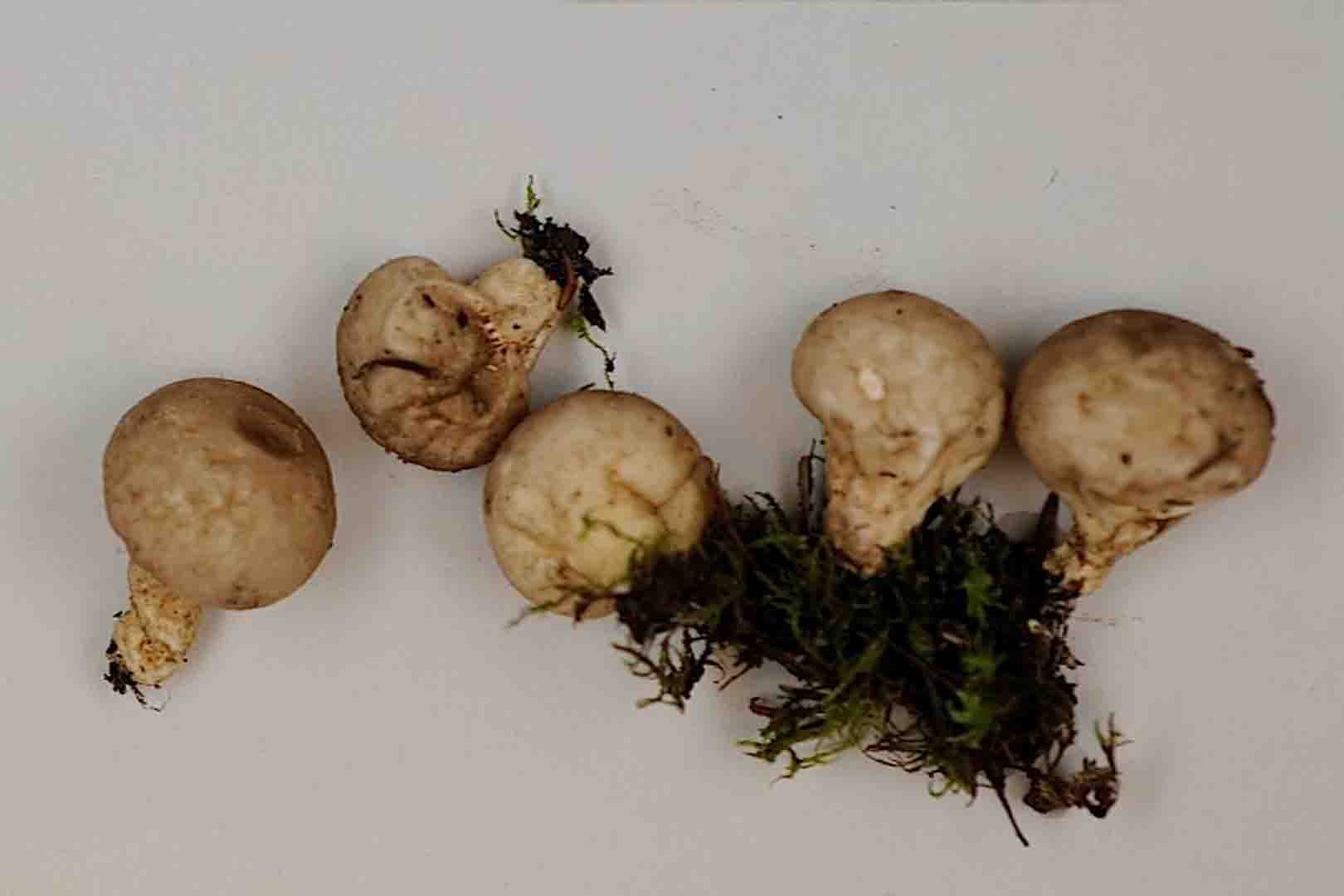Lycoperdon pyriforme — Pear-shaped puffball
Warning: although puffballs are edible, rule out poisonous look-alikes before eating any! Cut puffballs in half from top to bottom and look closely at the cut surface. The outer rind should be as thin as an eggshell; if thicker, the fungus may be a poisonous earthball (Scleroderma sp.). The interior should be white and completely uniform. If a small mushroom shape is folded inside, the specimen may be the 'egg' stage of a deadly or dangerous species such as the death cap, Amanita phalloides. If the inside is yellow or brown, the specimen is too old and bitter to eat.
Odour: None or faintly mushroomy.
Taste: Mild if the inside is uniformly white, becoming bitter when the flesh yellows.
General form: 2–6 cm tall, 1–3.5 cm broad with a non-sporulating, stem-like base supporting an enlarged, rounded or ellipsoid sporulating upper portion. Puffballs, like marshmallows, are slightly soft and squishy. White thread-like strands of mycelium often radiate from the base.
Outer layer, peridium: Surface is whitish when young, becoming tan or brown, covered with scattered spines or small granules.
Inner tissue, gleba: White and homogenous before spores start to mature. Then yellowish to yellowish-olive, and finally as internal tissues break down, drying so that only a smoky, powdery, olive-brown to brown-coloured mass of spores remains.
Sterile base: Variable in shape and size, from small and inconspicuous to wider than sporulating gleba. Interior flesh of base whitish.
Spores: 2.5–3.5 x 2.5–4 µm smooth, globose to subglobose, olive-coloured.
Spore release: A pore forms at the top of the peridium as spores mature and turn dry and dusty. Touch the side of the peridium and spores 'smoke' out of the pore. Watch a video (different kind of puffball, same mechanism).
Habitat: Growing, often in troops, on stumps, rotting logs and woodchips.
Geographical range: Widely distributed, known from North America, Europe and eastern Asia1,6.
Treatment: Contact your regional Poison Control Centre if you realize you or someone you know has become ill after eating puffballs or other mushrooms. Poison centres provide free, expert medical advice 24 hours a day, seven days a week. If possible, save the mushrooms or some of the leftover food containing the mushrooms to help confirm identification.
Poison Control:
British Columbia: 604-682-5050 or 1-800-567-8911.
United States (WA, OR, ID): 1-800-222-1222.


